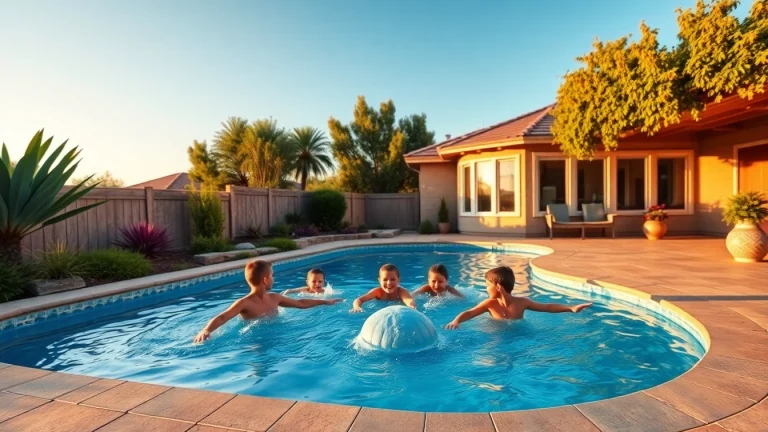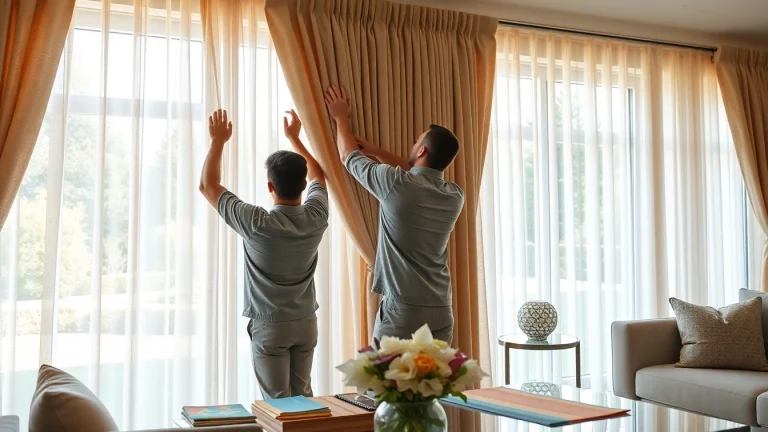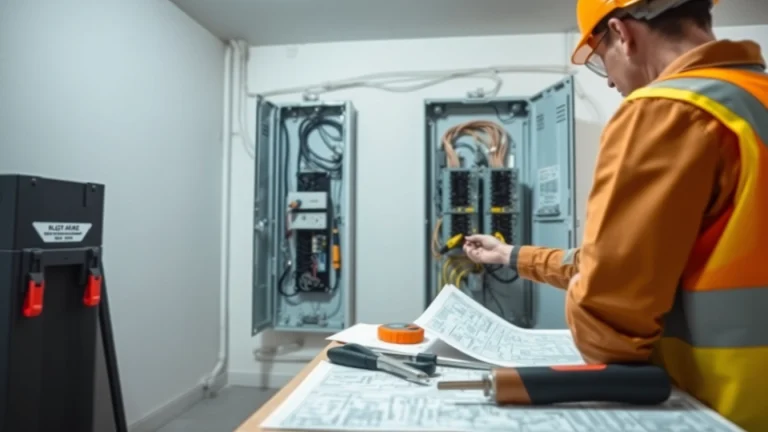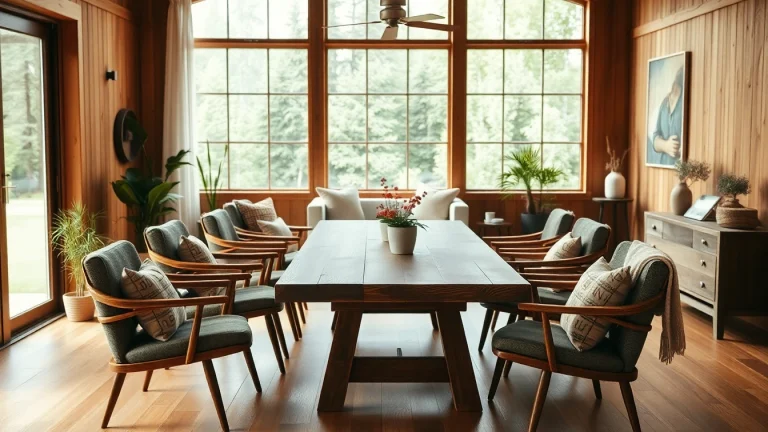
Expert Tips for Swimming Pool Installation: Your Guide to a Flawless Backyard Oasis
Understanding the Basics of Swimming Pool Installation
Installing a swimming pool can be one of the most exciting and rewarding home improvements. Whether you’re looking to create a spacious escape for relaxation or a vibrant social hub for friends and family, understanding the fundamentals of swimming pool installation is crucial. This guide covers everything from types of pools to local regulations, equipping you with the knowledge needed for a successful installation.
Types of Swimming Pools
Swimming pools come in various shapes, sizes, and materials. The most common types include:
- Inground Pools: These are built into the ground and can be made from concrete, fiberglass, or vinyl-lined materials. Each type has its advantages; for instance, fiberglass is known for its durability and low maintenance, while concrete offers customization and longevity.
- Above Ground Pools: Often more affordable, these pools are easy to install and can be taken down when not in use. They typically have metal or plastic frames and are lined with vinyl.
- Lap Pools: Ideal for fitness enthusiasts, these narrow pools are designed for swimming laps. They take up less space and can fit into smaller backyards.
Essential Materials for Installation
The materials chosen for your swimming pool installation greatly affect both aesthetics and functionality. Key materials include:
- Concrete: Highly customizable and extremely durable, it’s often used for custom-shaped inground pools.
- Fiberglass: Prefabricated shells that are quick to install and require less maintenance.
- Vinyl Liner: These are cost-effective but may need replacing every 5 to 9 years, depending on usage and maintenance.
- Various Equipment: Pumps, filters, heaters, and lighting systems are also essential components that ensure proper operation and maintenance of the pool.
Local Regulations and Permits
Before commencing installation, it is vital to check local regulations and obtain the necessary permits. These regulations can vary widely based on location and may include:
- Design specifications – ensuring safety features are included.
- Setback requirements – determining how far the pool must be from property lines and other structures.
- Safety barriers – local laws may require fences or pool covers to ensure safety, especially if children are present.
Planning Your Swimming Pool Installation
Choosing the Right Location
Location is key to maximizing the enjoyment of your swimming pool. Factors to consider include:
- Sun Exposure: A south-facing pool will receive more sunlight, which can keep the water warm and reduces heating costs.
- Accessibility: Ensure the pool is easily accessible from your home and allows for comfortable flow to other outdoor areas.
- Privacy: Consider the proximity of neighbors and the layout of your yard to maintain privacy.
Budgeting for Your New Pool
Budgeting is a critical part of the planning process. Major factors influencing cost include:
- Pool Type: Inground pools are significantly more expensive than above-ground options.
- Size and Depth: Larger and deeper pools typically cost more to install and maintain.
- Amenities: Features like waterfalls, spa attachments, and custom lighting can considerably increase the budget.
- Site Preparation: The condition of your land will impact installation costs; rocky or uneven land will require additional work.
Scheduling the Installation Process
Coordinating the installation timeline is essential for a smooth process. Consider:
- Weather Conditions: Plan installations during your local dry season to reduce delays.
- Contractor Availability: Confirm your contractor’s schedule and allow flexibility for unexpected delays.
- Seasonal Considerations: If you want the pool ready for summer, consider starting installation in early spring.
Steps to a Successful Swimming Pool Installation
Excavation and Ground Preparation
Once your plans are in place, excavation can begin. This step involves removing the necessary soil and creating the pool structure according to your design. Key considerations include:
- Mapping out the area with stakes and strings to visualize the pool size.
- Ensuring adequate drainage to prevent future waterlogging issues.
- Checking for underground utilities before commencing digging.
Installing the Pool Structure
The next step involves setting up the pool structure. This can include:
- For Inground Pools: If you’re using concrete, you will need to create a steel reinforcement framework followed by pouring concrete. For fiberglass, the shell is lower into the excavated hole.
- For Above Ground Pools: Assembly of the frame and liner usually follows after a level base is prepared.
Connecting Pool Equipment and Features
Once the pool structure is installed, the next phase involves connecting equipment, including:
- Pumps: Vital for circulation and filtration.
- Filters: Ensuring the pool stays clean and safe.
- Heaters: Optional, but necessary for warmer water temperatures.
- Lighting: For aesthetic appeal and added safety during night use.
Post-Installation Considerations
Landscaping Around the Pool
Landscaping enhances the overall aesthetic of your backyard oasis. Ideas include:
- Adding patio stones or decking for poolside relaxation areas.
- Incorporating plants that can thrive in the local climate and are safe around pools.
- Creating shaded areas with umbrellas or pergolas for comfort.
Pool Safety Features
Safety is paramount when it comes to pool ownership. Implementing features such as:
- Fences: Most regions require fencing around pools to prevent accidents, particularly for children and pets.
- Pool Covers: Consider installing a safety cover that can withstand weight to prevent accidental falls.
- Alarms: Pool alarms can alert you if someone enters the pool area unexpectedly.
Maintenance Tips for Long-lasting Enjoyment
To ensure your pool remains in excellent condition, regular maintenance is necessary. Pro tips include:
- Regularly check and balance water chemistry to avoid algae buildup.
- Keep the pool clean by skimming debris regularly and vacuuming.
- Schedule seasonal check-ups with a qualified technician to check equipment and ensure longevity.
Selecting a Reliable Contractor for Swimming Pool Installation
What to Look for in a Pool Builder
Choosing the right contractor is crucial for a successful pool installation. Focus on:
- Experience: Look for contractors with a proven track record in building pools similar to what you envision.
- Licensing and Insurance: Ensure the contractor is properly licensed and carries liability insurance to protect yourself from potential issues.
- References and Portfolio: Check previous work and ask for references to gauge customer satisfaction.
Questions to Ask Before Hiring
Engagement with potential contractors is essential. Consider asking:
- What is included in the cost? Get detailed estimates to avoid surprises later.
- What is the timeline for completion? Understanding the duration helps in planning your summer activities.
- How do you handle changes during the project? Knowing their policy on changes can save potential confusion.
Reading Reviews and Checking References
Prioritize due diligence by reading online reviews on platforms like Yelp or Google Reviews. Ask contractors for references and follow up with previous clients to get their insights on the build process and any post-installation service experiences. A well-informed choice can lead to a smooth installation process and greater satisfaction with your new swimming pool.


